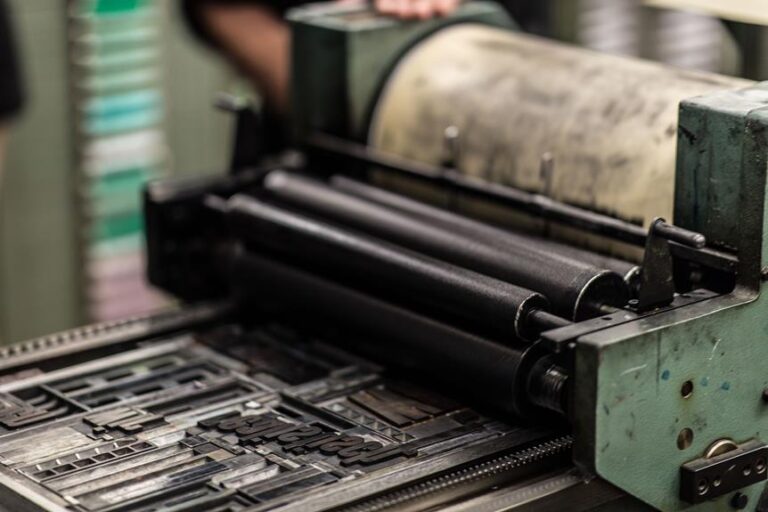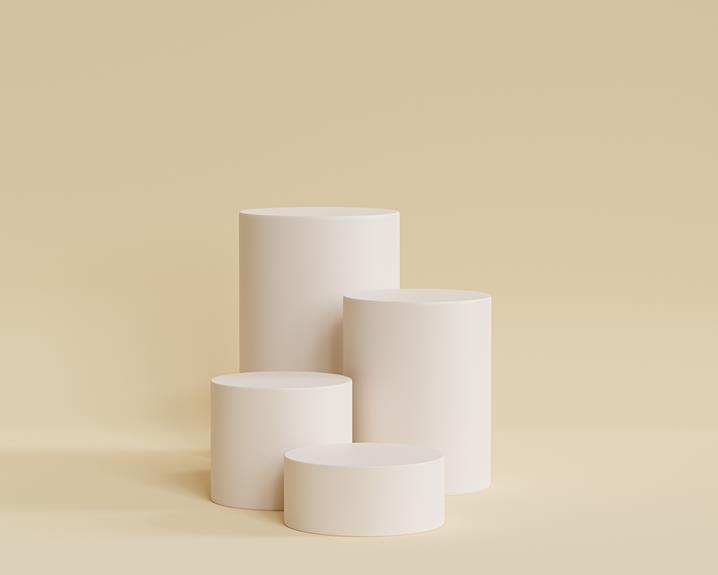Metal 3D Printing Materials: Pushing Boundaries in Additive Manufacturing
In the ever-evolving world of additive manufacturing, metal 3D printing materials have emerged as a groundbreaking solution, pushing the boundaries of what is possible.
This article explores the advantages, challenges, and applications of metal printing, with a focus on innovative materials such as stainless steel and titanium.
By harnessing the power of these cutting-edge technologies, industries are finding new ways to liberate their design capabilities and revolutionize the manufacturing process.
Join us as we delve into the exciting world of metal 3D printing and its limitless potential.
Key Takeaways
- Metal 3D printing materials offer the ability to produce complex geometries and unprecedented design freedom, leading to innovation in various industries.
- The aerospace industry benefits from the creation of lightweight yet strong components, while the medical field can produce custom implants and prosthetics.
- While metal 3D printing provides precise control over material deposition and minimizes waste, there are challenges such as limited availability of suitable materials and the need for improved process control and quality assurance.
- Collaboration between researchers, industry experts, and regulatory bodies is crucial in pushing the boundaries of metal additive manufacturing.
The Advantages of Metal 3D Printing Materials
One of the key advantages of metal 3D printing materials is their ability to produce complex geometries that would be difficult or impossible to achieve using traditional manufacturing methods. Metal 3D printing, also known as additive manufacturing, has revolutionized the way we produce metal parts, allowing for unprecedented design freedom and innovation.
In traditional manufacturing processes, such as casting or machining, the fabrication of intricate and complex shapes can be a challenging task. However, with metal 3D printing materials, this limitation is overcome. By layering thin sheets of metal powder and selectively fusing them together using lasers or electron beams, metal prints can be created with intricate geometries, including internal cavities, overhangs, and complex lattice structures.
This ability to produce complex geometries opens up a world of possibilities in various industries. For example, in aerospace, metal 3D printing materials allow for the creation of lightweight, yet strong, components with optimized designs that improve fuel efficiency. In medical applications, the technology enables the production of custom implants and prosthetics that perfectly match the patient's anatomy.
Furthermore, metal 3D printing materials offer advantages in terms of material utilization and waste reduction. Unlike traditional manufacturing methods, where excess material is often removed during the fabrication process, additive manufacturing allows for precise control over the material deposition, minimizing waste and maximizing efficiency.
Overcoming Challenges in Metal Additive Manufacturing
Despite numerous advancements, metal additive manufacturing still faces several challenges that need to be overcome to fully realize its potential in various industries. One of the main challenges lies in the limited availability of suitable metal 3D printing materials. While there are a variety of metal filaments available for additive manufacturing, not all metals can be easily printed due to their high melting points and thermal properties. Research and development efforts are underway to expand the range of metal materials that can be used in metal additive manufacturing, allowing for more versatile and functional parts to be produced.
Another challenge is the need for improved process control and quality assurance in metal additive manufacturing. The complex nature of metal printing requires precise control over factors such as temperature, gas flow, and powder distribution to ensure the final product meets the desired specifications. This necessitates the development of advanced monitoring and control systems to optimize the printing process and minimize defects.
Furthermore, post-processing steps such as heat treatment and surface finishing are often necessary to achieve the desired mechanical properties and surface quality of metal printed parts. These additional steps add time and cost to the manufacturing process, making it essential to develop more efficient post-processing techniques that can be seamlessly integrated into the metal additive manufacturing workflow.
In order to address these challenges, collaboration between researchers, industry experts, and regulatory bodies is crucial. By working together, we can push the boundaries of metal additive manufacturing and unlock its full potential in a wide range of applications.
Now that we have explored the challenges in metal additive manufacturing, let's delve into the exciting world of popular applications for metal printing.
Exploring Popular Applications for Metal Printing
Metal printing has revolutionized various industries by enabling the production of complex and customized metal parts with unprecedented precision and efficiency. This advanced technology has found applications in a wide range of industries, including aerospace, automotive, medical, and even consumer goods.
In the aerospace industry, metal printing has been used to manufacture lightweight and high-performance components such as turbine blades, fuel nozzles, and engine parts. The ability to create complex geometries and intricate internal structures has resulted in improved fuel efficiency and reduced emissions.
In the automotive industry, metal printing has been utilized to produce customized parts and prototypes, allowing for faster product development and reduced costs. It has also enabled the production of lightweight components, contributing to improved fuel economy and performance.
In the medical field, metal printing has played a crucial role in the production of patient-specific implants and surgical instruments. The ability to manufacture personalized implants based on patient scans has enhanced surgical outcomes and patient satisfaction.
Furthermore, metal printing has found applications in the production of consumer goods, such as jewelry and decorative items. The ability to create intricate designs and unique shapes has led to the creation of high-quality, customized products.
Innovations in Stainless Steel 3D Printing
With advancements in technology, stainless steel 3D printing has expanded the possibilities of additive manufacturing in various industries. Stainless steel, known for its durability, corrosion resistance, and high strength-to-weight ratio, is a popular choice for many applications. In recent years, there have been significant innovations in stainless steel 3D printing, pushing the boundaries of what is possible.
One of the major advancements in stainless steel 3D printing is the development of new alloys specifically designed for additive manufacturing. These alloys offer improved properties, such as increased strength, better heat resistance, and enhanced printability. For example, the use of stainless steel 316L powder with high-density laser melting technology has enabled the production of complex geometries with excellent mechanical properties.
Furthermore, the introduction of multi-material 3D printers has opened up new avenues for stainless steel 3D printing. By combining stainless steel with other materials, such as polymers or ceramics, it is now possible to create hybrid objects with unique properties and functionalities. This has expanded the range of applications for stainless steel 3D printing, from aerospace components to medical implants.
Table: Innovations in Stainless Steel 3D Printing
| Innovation | Description |
|---|---|
| New alloys | Development of alloys specifically designed for additive manufacturing, offering improved properties and printability. |
| Multi-material printing | Combination of stainless steel with other materials, creating hybrid objects with unique properties and functionalities. |
| Complex geometries | High-density laser melting technology enabling the production of complex geometries with excellent mechanical properties using stainless steel 316L powder. |
| Expanded applications | The range of applications for stainless steel 3D printing has expanded, including aerospace components and medical implants. |
With these innovations, stainless steel 3D printing is revolutionizing the manufacturing industry, providing greater design freedom, reduced lead times, and cost savings. However, the advancements in stainless steel 3D printing are just the beginning. The next section will explore the exciting possibilities and challenges in pushing the limits with titanium 3D printing.
Pushing the Limits With Titanium 3D Printing
As technology advances, the possibilities for titanium 3D printing are expanding, allowing manufacturers to push the limits and unlock new potential in additive manufacturing. Titanium, known for its exceptional strength-to-weight ratio and corrosion resistance, has long been a valuable material in various industries, including aerospace, medical, and automotive. With the advent of 3D printing, titanium's unique properties can now be fully harnessed, offering unprecedented design freedom and manufacturing capabilities.
One of the key advantages of titanium 3D printing is the ability to create complex geometries that were previously impossible with traditional manufacturing methods. This is achieved through the layer-by-layer deposition of titanium powder using a laser or electron beam, resulting in intricate and lightweight structures. Additionally, the process allows for the integration of internal features and channels, enabling the creation of optimized designs that enhance performance and efficiency.
Furthermore, titanium 3D printing offers significant cost and time savings compared to conventional manufacturing techniques. The ability to produce components directly from digital designs eliminates the need for expensive tooling and reduces material waste. Complex assemblies can also be consolidated into a single printed part, reducing the number of components and simplifying assembly processes.
Frequently Asked Questions
What Are the Limitations of Metal 3D Printing Materials?
The limitations of metal 3D printing materials are multifaceted. The process is limited by factors such as material availability, high costs, limited part size, complexity constraints, surface finish, and post-processing requirements. These challenges hinder widespread adoption in certain industries.
Can Metal 3D Printing Materials Be Used in High-Temperature Applications?
Yes, metal 3D printing materials can be used in high-temperature applications. They have been developed to withstand extreme temperatures and exhibit excellent thermal stability, making them suitable for aerospace, automotive, and other industries requiring heat-resistant components.
Are There Any Specific Safety Precautions That Need to Be Taken When Working With Metal 3D Printing Materials?
When working with metal 3D printing materials, specific safety precautions must be taken to ensure the well-being of individuals involved. These precautions may include proper ventilation, the use of protective equipment, and following established guidelines for handling and disposing of hazardous materials.
How Do the Costs of Metal 3D Printing Materials Compare to Traditional Manufacturing Methods?
The costs of metal 3D printing materials compared to traditional manufacturing methods can vary. Factors such as material type, complexity of design, and production volume influence the final cost. However, 3D printing can offer cost savings in terms of reduced material waste and increased design flexibility.
Are There Any Environmental Considerations When Using Metal 3D Printing Materials?
When using metal 3D printing materials, environmental considerations are crucial. Factors such as energy consumption, waste generation, and emissions must be taken into account. Implementing sustainable practices and optimizing manufacturing processes can mitigate the environmental impact of metal 3D printing.
Conclusion
In conclusion, metal 3D printing materials have revolutionized the field of additive manufacturing by pushing the boundaries of what is possible. Overcoming challenges such as high costs and limited material options, metal printing has opened up new opportunities in industries ranging from aerospace to healthcare.
Innovations in stainless steel and titanium printing have further expanded the capabilities of this technology. Like a master sculptor shaping raw materials into intricate works of art, metal 3D printing continues to push the limits of manufacturing possibilities.









